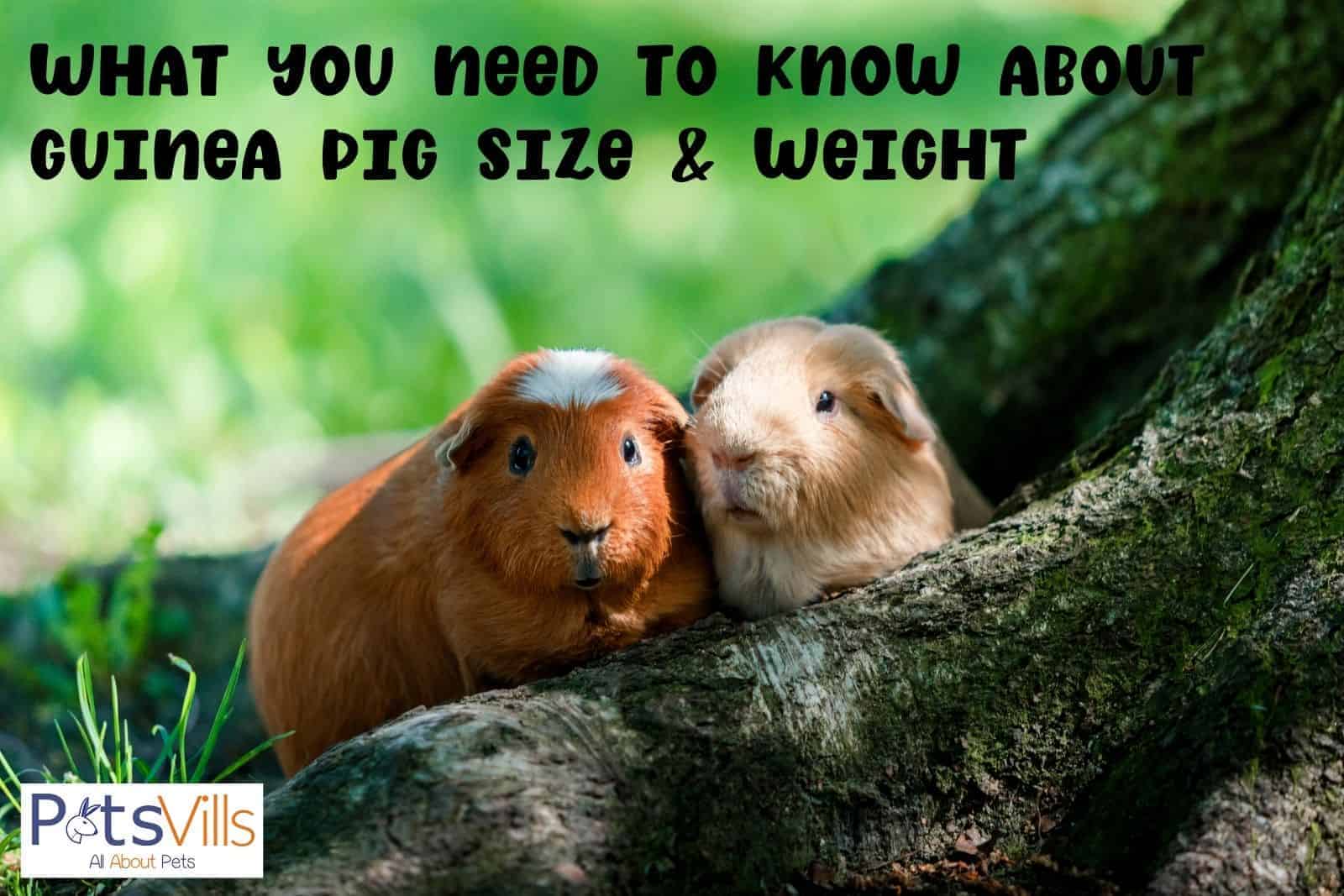Curious about all things related to guinea pig size and weight?
We’ve got you covered!
Below, we’ll talk about the average cavy size, plus how to measure & weigh your own piggies at home.
Let’s get started!
Average Guinea Pig Size and Weight
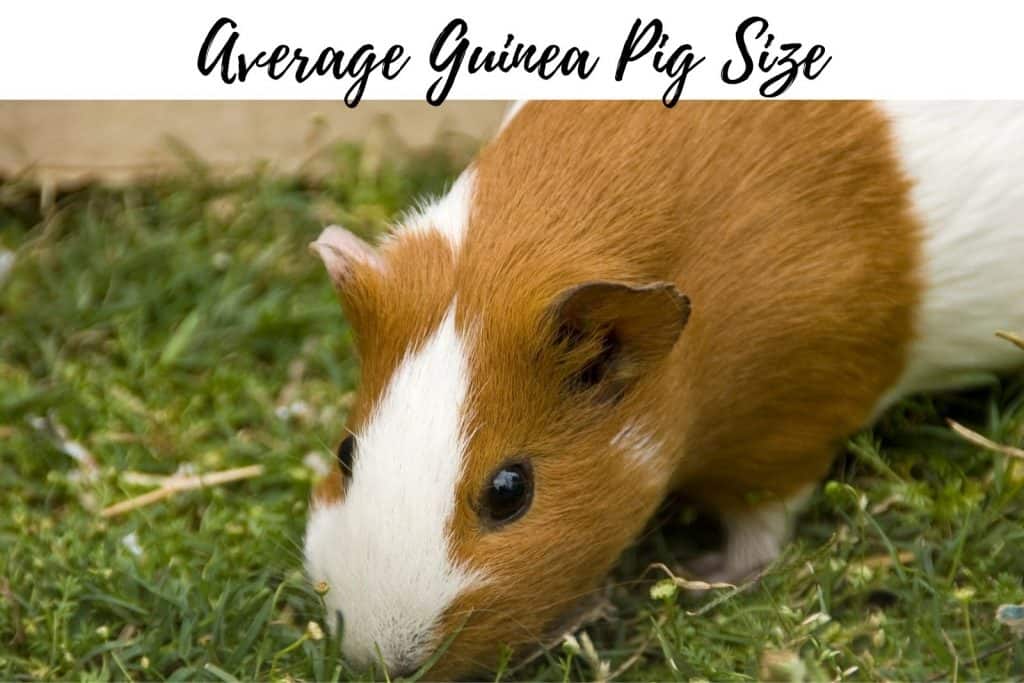
At birth, a guinea pig will usually measure about 3-4 inches long.
From that point, they grow pretty quickly and by the time they are 8 weeks old, they are about 6-8 inches in length.
From here, their growth will slow down slightly, but by the time they are 16 weeks old, they will be around 8-10 inches long.
Guinea pigs will reach full maturity at 14 months of age and will stop growing by this time.
An average adult male guinea pig is approximately 8-12 inches in length, while an average adult female is approximately 8-10 inches in length.
READ MORE: Guinea Pig vs Hamster: Which One Should You Choose?
Average Guinea Pig Weight
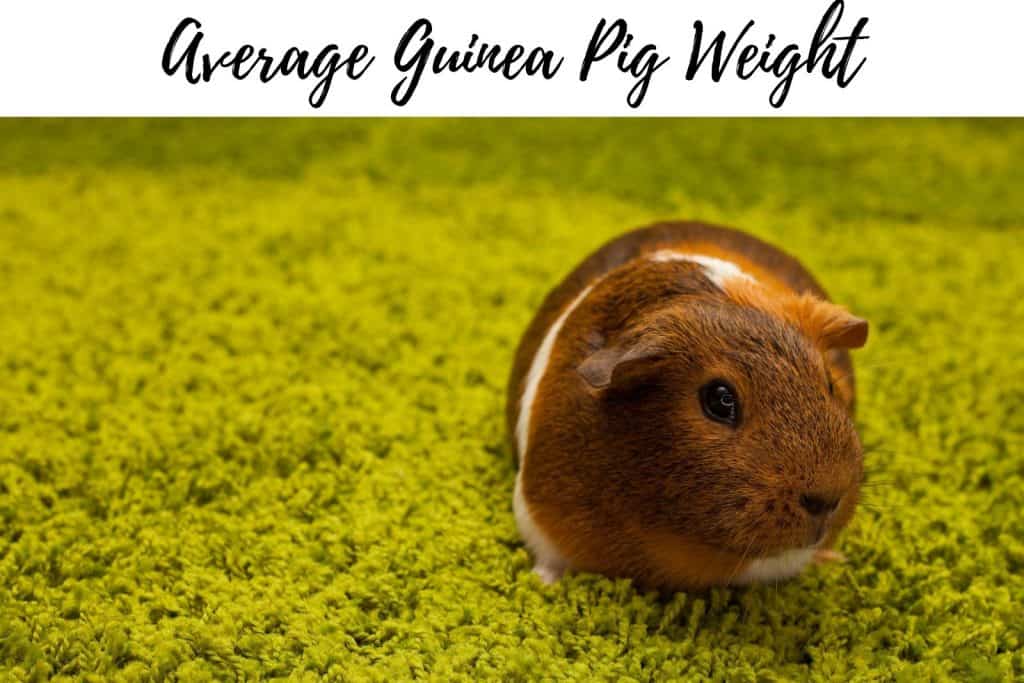
When they are born, a guinea pig will weigh around 100 grams.
From there, they will gain an average of 30-50 grams per week.
At 8 weeks of age, guinea pigs will weigh between 180-240 grams and by the time they are 16 weeks of age, they will weigh between 360-480 grams.
At 14 months of age, guinea pigs will reach their full grown size and weight.
An average adult male guinea pig weighs between 900-1,200 grams, while an average adult female weighs between 700-900 grams.
How to Measure Your Guinea Pig
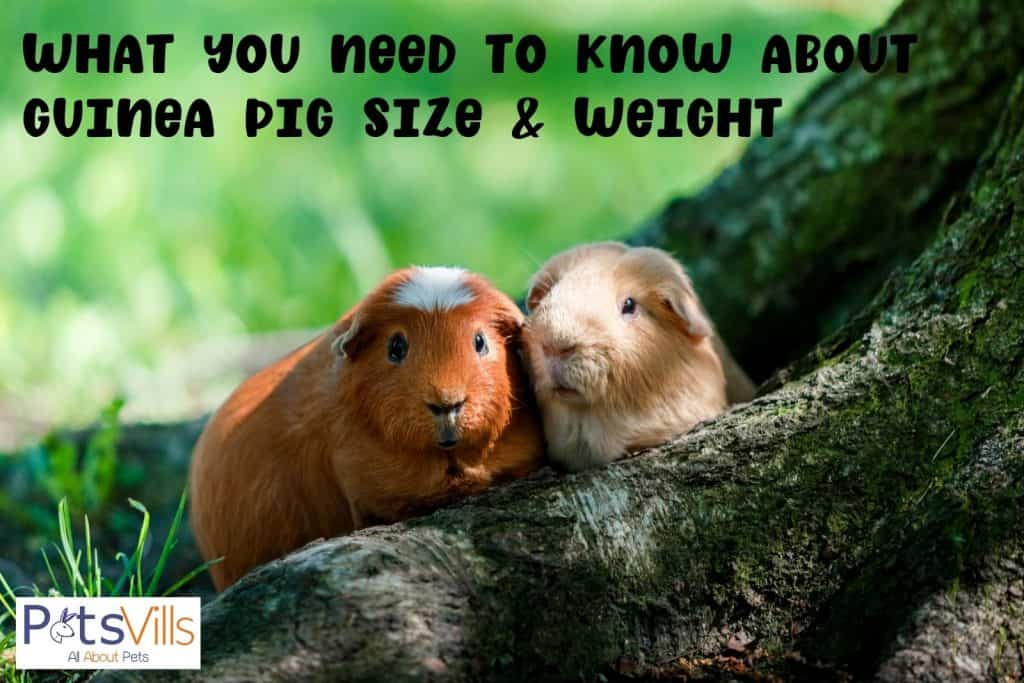
To measure the size of your guinea pig, place them on a flat surface. Using a measuring tape, measure them from the tip of their nose to their rear.
How to Weigh Your Guinea Pig

You should weigh your guinea pig on a weekly basis, preferable on the same day and at the same time so that the weight recorded is the most reliable.
To weigh your guinea pig, it is recommended that you use a digital food scale that measures in grams with a tray that is large enough to safely fit a container.
Many scales have a tare feature so that you can place a container on the scale, then zero it out so that you’re only measuring your guinea pig’s weight and not including the weight of the container. Check the video below.
Guinea Pig Size & Weight By Breed
The smallest breed of guinea pig is the Ridgeback, with some adults reaching only 5 inches in length, while the largest breed is the Rex, which can grow up to 17 inches in length.
Here are some other popular guinea pig breeds and their average size and weight at maturity.
- Abyssinian– 10-12 inches in length and weigh 900-1,400 grams.
- American– 7-9 inches in length and weigh 680-1,100 grams.
- Coronet– 7-12 inches in length and weigh 680-1,360 grams.
- Peruvian– 12-14 inches in length and weigh 900-1,400 grams.
- Silkie– 8-12 inches in length and weigh 700-1,200 grams.
- Teddy– 10-12 inches in length and weigh 900-1,400 grams.
- Texel– 8-10 inches in length and weigh 800-1,200 grams.
READ MORE: Can Guinea Pigs Swim?
Guinea Pig Weight Loss
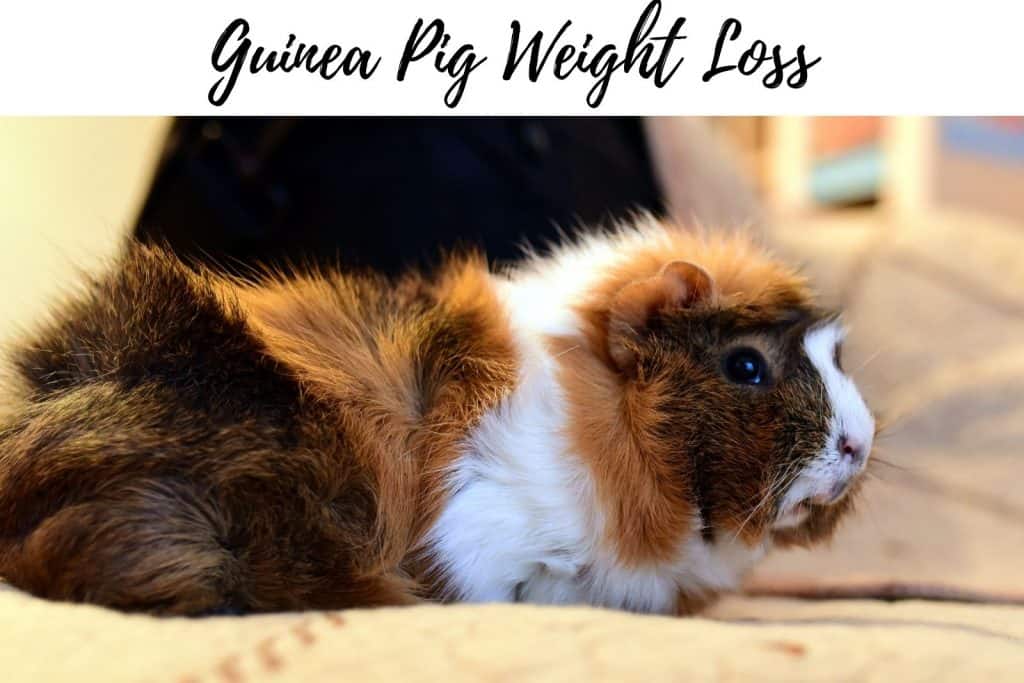
Weight loss in guinea pigs may be caused by a number of things such as bacterial or viral infections, changes in their environment, dehydration, dental problems, gastrointestinal diseases, improper diet, malnourishment, scurvy, and stress.
There are some guidelines to be aware of when it comes to the amount of weight loss your guinea pig has experienced, compared to their last weigh-in.
- Up to 25 grams less– Nothing to worry about; part of normal fluctuations.
- 25-55 grams less– Keep a close eye on their weight; weigh them daily.
- 55-85 grams less– Be on high alert; weigh them every 2 hours and contact your vet.
- 100+ grams less– Indicates something is seriously wrong; get to your vet ASAP!
Guinea Pig Weight Gain
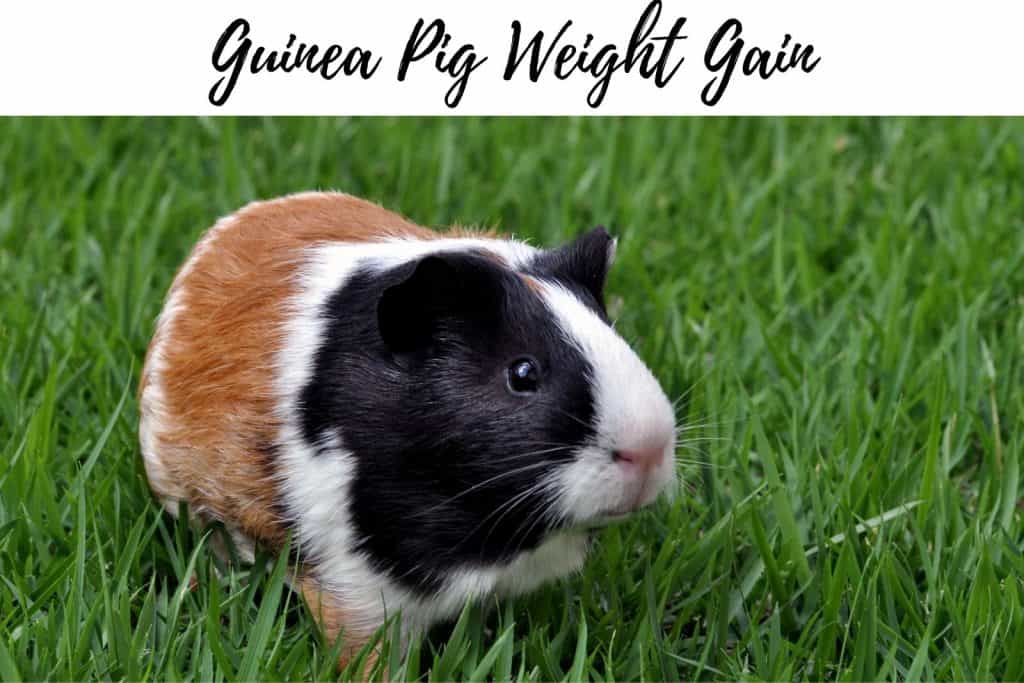
The main causes of weight gain in guinea pigs are feeding them too much food, not feeding them the right foods, and lack of exercise.
Potential health problems of overweight guinea pigs include diabetes, digestive problems, heart disease, high blood pressure, ketosis (the body produces too many ketones, which are chemicals that the liver makes), and mobility issues.
A healthy guinea pig diet should consist of 80% high-quality hay, 10% fresh vegetables, and 10% Vitamin C-fortified pellets.
For overweight guinea pigs, avoid giving them sugary treats and limit the number of fruits given, as they are high in sugar. Find out ways to exercise your guinea pig as well.
Do you have any other questions about guinea pig size and weight measurements? Share below!
Deanna is a passionate animal lover. She is the mom of several guinea pigs and sugar gliders.
When she’s not writing, Deanna loves listening to country music, or watching Dancing With The Stars.
Read her : Latest Articles
FIND HER ON: FACEBOOK and LINKEDIN and

